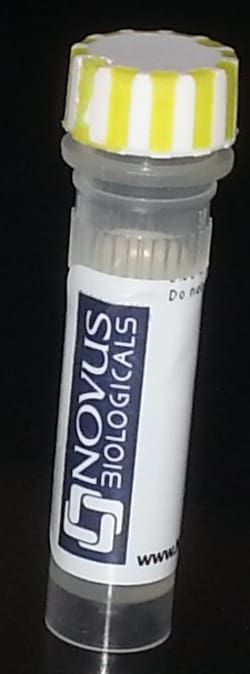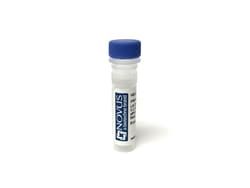VEGFR1/Flt-1 Antibody (FLT1/658), Alexa Fluor™ 350, Novus Biologicals™
Manufacturer: Novus Biologicals
Select a Size
| Pack Size | SKU | Availability | Price |
|---|---|---|---|
| Each of 1 | NP234618A30-Each-of-1 | In Stock | ₹ 57,494.00 |
NP234618A30 - Each of 1
In Stock
Quantity
1
Base Price: ₹ 57,494.00
GST (18%): ₹ 10,348.92
Total Price: ₹ 67,842.92
Antigen
VEGFR1/Flt-1
Classification
Monoclonal
Conjugate
Alexa Fluor 350
Formulation
50 mM sodium borate with 0.05% sodium azide
Gene Symbols
FLT1
Immunogen
Recombinant human VEGFR1/Flt-1 protein (Uniprot: P17948)
Quantity
0.1 mL
Gene ID (Entrez)
2321
Target Species
Human
Isotype
IgG1 κ
Applications
ELISA
Clone
FLT1/658
Dilution
ELISA
Gene Alias
EC 2.7.10, EC 2.7.10.1, FLT, FLT-1, Fms-like tyrosine kinase 1, fms-related tyrosine kinase 1 (vascular endothelial growth factor/vascularpermeability factor receptor), FRT, Tyrosine-protein kinase FRT, Tyrosine-protein kinase receptor FLT, vascular endothelial growth factor receptor 1, Vascular permeability factor receptor, VEGFR1, VEGFR-1
Host Species
Mouse
Purification Method
Protein A or G purified
Primary or Secondary
Primary
Test Specificity
Three cell membrane receptor tyrosine kinases, Flt-1 (also designated VEGF-R1), Flk-1 (also designated VEGF-R2) and Flt-4, putatively involved in the growth of endothelial cells, are characterized by the presence of seven immunoglobulin-like sequences in their extracellular domain. These receptors exhibit high degrees of sequence relatedness to each other as well as lesser degrees of relatedness to the class III receptors including CSF-1/Fms, PDGR, SLFR/Kit and Flt-3/Flk-2. Two members of this receptor class, Flt-1 and Flk-1, have been shown to represent high affinity receptors for vascular endothelial growth factors (VEGFs). On the basis of structural similarity to Flt-1 and Flk-1, it has been speculated that Flt-4 might represent a third receptor for either VEGF or a VEGF-related ligand.
Content And Storage
Store at 4°C in the dark.
Description
- VEGFR1/Flt-1 Monoclonal specifically detects VEGFR1/Flt-1 in Human samples
- It is validated for Flow Cytometry, Immunocytochemistry/Immunofluorescence.

